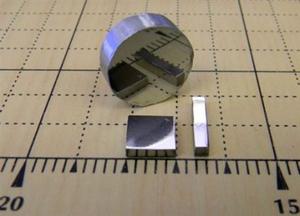EnergyThermoelectric material converts heat waste to electricity
Scientists have developed a thermoelectric material which they claim is the best in the world at converting waste heat to electricity; this is very good news, since nearly two-thirds of energy input is lost as waste heat

Stanford entry into the thrermoelectric arena // Source: stanford.edu
Northwestern University scientists have developed a thermoelectric material which they claim is the best in the world at converting waste heat to electricity. This is very good news, since nearly two-thirds of energy input is lost as waste heat.
The material could signify a paradigm shift. The inefficiency of current thermoelectric materials has limited their commercial use, but now, with an environmentally stable material that is expected to convert 15 to 20 percent of waste heat to useful electricity, thermoelectrics could see more widespread adoption by industry.
A Northwestern University release reports that possible areas of application include the automobile industry (much of gasoline’s potential energy goes out a vehicle’s tailpipe), heavy manufacturing industries (such as glass and brick making, refineries, coal- and gas-fired power plants), and places were large combustion engines operate continuously (such as in large ships and tankers).
Waste heat temperatures in these areas can range from 400 to 600 degrees Celsius (750 to 1,100 degrees Fahrenheit), the sweet spot for thermoelectrics use.
The new material, based on the common semiconductor lead telluride, is the most efficient thermoelectric material known. It exhibits a thermoelectric figure of merit (so-called “ZT”) of 2.2, the highest reported to date. Chemists, physicists, material scientists and mechanical engineers at Northwestern and Michigan State University collaborated to develop the material.
The study was published in the 20 September issue of Nature.
“Our system is the top-performing thermoelectric system at any temperature,” said Mercouri G. Kanatzidis, who led the research and is a senior author of the paper. “The material can convert heat to electricity at the highest possible efficiency. At this level, there are realistic prospects for recovering high-temperature waste heat and turning it into useful energy.”
Kanatzidis is Charles E. and Emma H. Morrison Professor of Chemistry in Northwestern’s Weinberg College of Arts and Sciences. He also holds a joint appointment at Argonne National Laboratory.
“People often ask, what is the energy solution?” said Vinayak P. Dravid, one of Kanatzidis’ close collaborators. “But there is no unique solution — it’s going to be a distributed solution. Thermoelectrics is not the answer to all our energy problems, but it is an important part of the equation.”
Dravid is the Abraham Harris Professor of Materials Science and Engineering at the McCormick School of Engineering and Applied Science and a senior author of the paper.
Even before the Northwestern record-setting material, thermoelectric materials were starting to get better and being tested in more applications.
